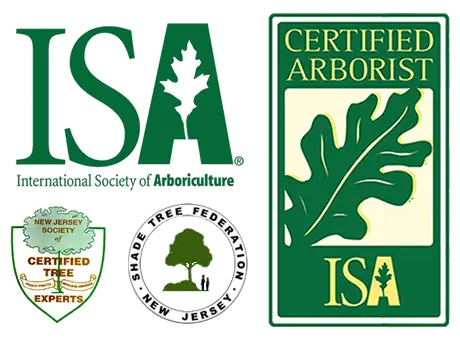Table of Contents

Trees are a vital part of our environment, providing beauty, shade, and even increasing property value. However, they are not immune to the forces of nature, especially seasonal storms. While these natural events can bring much-needed rain, they can also wreak havoc on our beloved trees. In this article, we will delve into the various ways trees can sustain damage or become unhealthy due to seasonal storms, extreme weather, and changing seasons. Understanding these risks is crucial for preserving the health and safety of your trees.
Ways Trees Can Suffer from Seasonal Storms
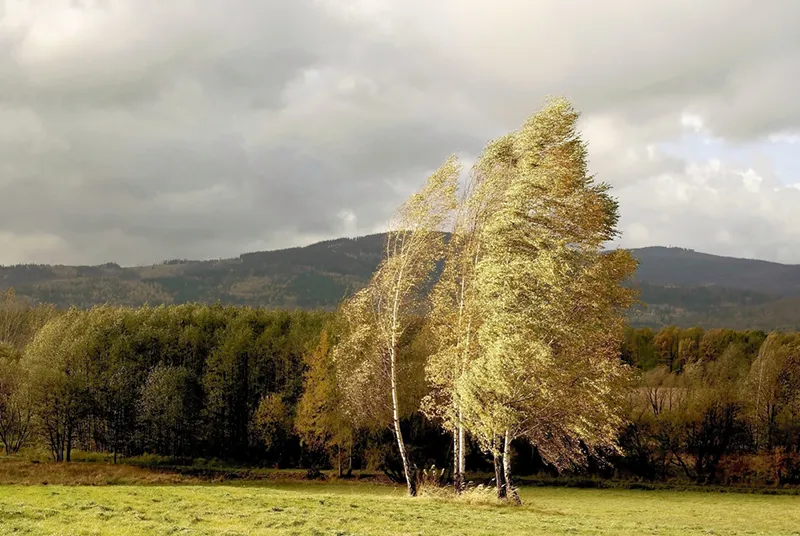
Wind Damage
- Limbs and Branches: High winds exert tremendous force on a tree’s limbs and branches. This pressure can lead to the snapping or tearing of weakened or diseased limbs. Improper pruning techniques can also leave the tree vulnerable to wind damage.
- Root Damage: The impact of strong winds isn’t limited to above-ground structures. The roots, which anchor the tree in the soil, can also suffer. Violent gusts can destabilize the soil around the root system, potentially leading to leaning or, in severe cases, uprooting.
- Canopy Thinning: Prolonged exposure to strong winds can result in canopy thinning. This occurs as leaves and smaller branches are stripped away, leaving the tree with a sparse and unbalanced appearance. Canopy thinning not only affects the tree’s aesthetics but also its ability to carry out essential photosynthesis.
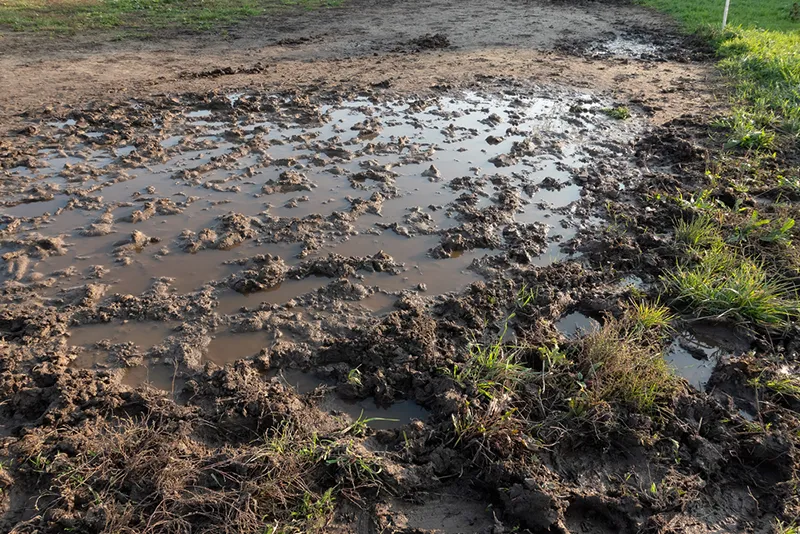
Waterlogged Soil
- Reduced Oxygen Supply: Excessive rainfall, while crucial for a tree’s hydration, can lead to a detrimental oversaturation of the soil. This oversaturation reduces the oxygen supply to the roots, a vital component for their health and function. Without sufficient oxygen, the roots can suffocate, leading to root rot and overall decline.
- Loss of Stability: Soggy soil compromises a tree’s anchoring ability. The roots, typically firmly embedded in the soil, lose their grip, making the tree more susceptible to uprooting. Even trees that have stood for decades can succumb to this risk if the soil becomes waterlogged.
- Nutrient Leaching: Excessive moisture can wash away vital nutrients from the soil, leaving the tree malnourished and susceptible to a host of secondary issues, including weakened immunity to diseases and pests.

Lightning Strikes
- Direct Strikes: A direct lightning strike on a tree can cause catastrophic damage. The immense electrical energy can split the trunk, scorch the bark, and potentially ignite a fire. Additionally, internal injuries may occur, even if external damage isn’t immediately visible.
- Indirect Strikes: Lightning doesn’t always strike a tree directly. Electrical currents can travel through the ground, potentially causing harm to the tree’s root system. This can lead to a gradual decline in health, making it crucial to monitor trees in the vicinity of a lightning strike.
- Fire Risk: Beyond the immediate damage, a lightning strike increases the risk of fire, especially during dry seasons. The internal heat generated by a strike can smolder within the tree, potentially leading to a later outbreak.
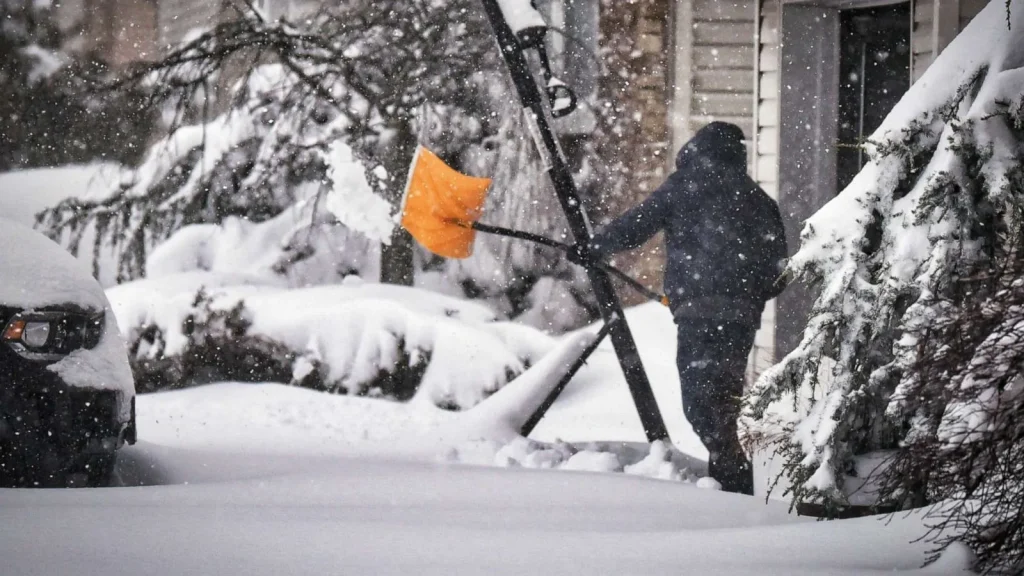
Snow and Ice Accumulation
- Structural Strain: Accumulated snow or ice can exert significant weight on a tree’s branches, especially those with a broad canopy. This added load can cause limbs to bend, crack, or even break completely, compromising the tree’s structural integrity.
- Interference with Photosynthesis: The weight of snow and ice can obstruct the tree’s ability to carry out photosynthesis. This critical process, which converts sunlight into energy, is essential for a tree’s overall health and vitality.
- Long-term Consequences: Even after the snow or ice melts, the structural damage can persist. Weaknesses caused by previous accumulation events can make the tree more vulnerable to future damage, emphasizing the importance of proactive care.
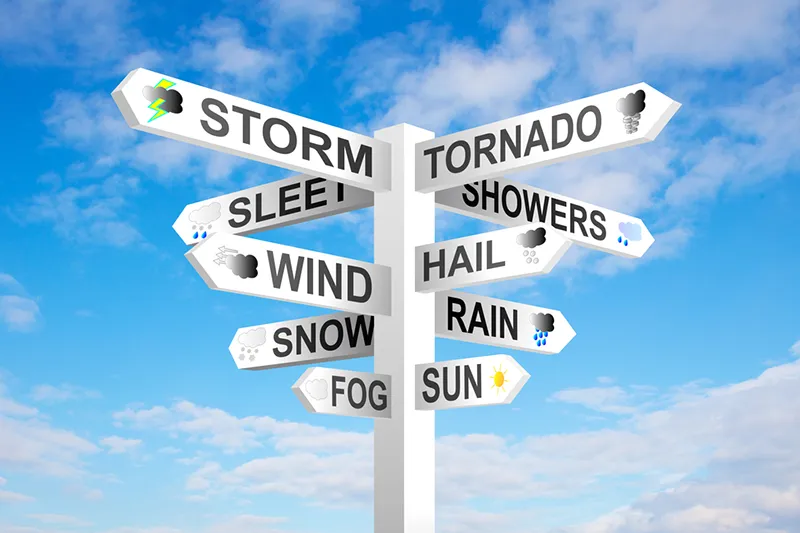
Temperature Fluctuations
- Frost Cracks: Rapid shifts in temperature, particularly during winter months, can cause the bark to split. These fissures, known as frost cracks, can be an entry point for pests and diseases. Addressing these cracks promptly is crucial for the tree’s long-term health.
- Winter Burn: Evergreen trees are particularly susceptible to desiccation during winter. Cold winds and low humidity levels can lead to a loss of moisture through the tree’s needles. This condition, known as winter burn, can result in brown or discolored foliage and, if severe, can lead to branch dieback.
- Stress on Winter-adapted Trees: Native trees that have adapted to cold climates can still experience stress from rapid temperature fluctuations. This stress weakens their natural defenses, making them more susceptible to opportunistic pests and diseases.
Get A Fall Service Quote
Detecting Hidden Tree Damage
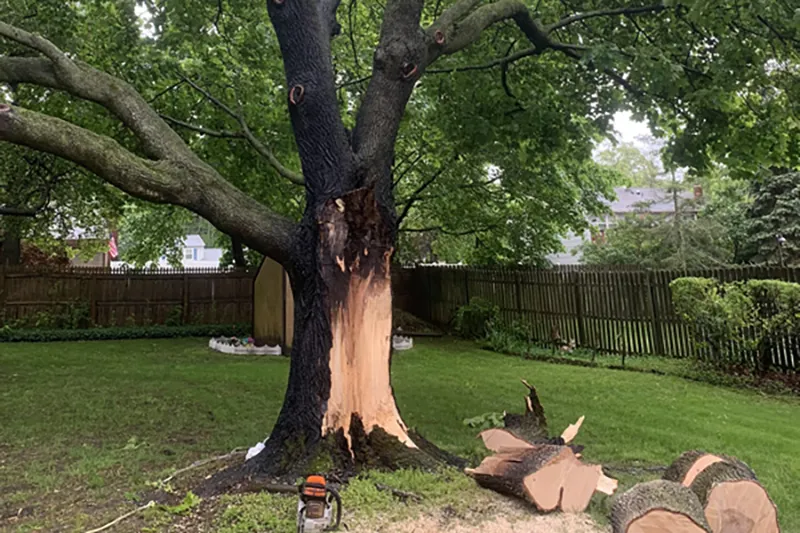
Ensuring the well-being of your trees involves more than just visual inspections; it requires a keen eye for subtle signs of stress and potential hazards. Detecting hidden damage is a crucial step in safeguarding your trees from the aftermath of seasonal storms. In this section, we will explore key methods to assess your trees’ health beyond surface appearances. From inspecting trunks and branches to evaluating the often overlooked root system, these techniques provide a comprehensive understanding of your tree’s condition. Remember, early detection can make all the difference in preserving the vitality and safety of your cherished arboreal companions.
Inspecting Trunks and Branches
- Look for cracks, splits, or wounds that may have resulted from storm damage.
- Pay attention to any areas of missing bark, as this can indicate underlying issues.
Assessing Foliage
- Check for discolored or wilting leaves, which can be a sign of stress or disease.
- Note any sudden loss of leaves or needles, which may indicate a more serious problem.
Evaluating Roots
- Observe the soil around the base of the tree for signs of heaving or tilting.
- Gently probe the soil for root damage or decay.
Seeking Professional Assessment
- Engage a certified arborist to conduct a thorough evaluation, especially if you suspect hidden damage.
Vigilance in detecting hidden damage is paramount in ensuring the longevity and vitality of your trees. By employing these methods, you empower yourself with a comprehensive understanding of your tree’s health beyond what meets the eye. Remember, early intervention can be the key to mitigating potential risks and preserving the natural beauty of your landscape. In cases where uncertainty lingers, seeking the expertise of a certified arborist provides an additional layer of assurance. Together, these practices form a robust foundation for the care and stewardship of your cherished arboreal companions. In the next section, we will delve into proactive measures you can take to fortify your trees against the challenges posed by seasonal storms.
Conclusion
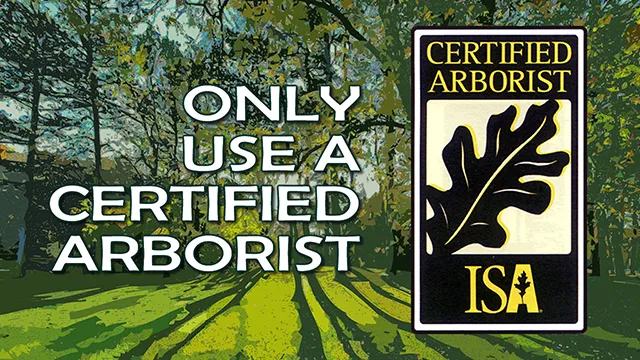
Regular inspections and prompt action in the aftermath of extreme weather events can make all the difference. Remember, a healthy tree not only enhances the beauty of your landscape but also contributes to the overall well-being of the environment.
By taking proactive measures and seeking professional guidance when needed, you can ensure that your trees continue to thrive in the face of Mother Nature’s unpredictable temperament. We urge you to schedule service now to gain the peace of mind that comes with knowing the trees surrounding your home are healthy. Call Hufnagel Tree Service by dialing (732) 291-4444.
Call Now To Schedule Service
